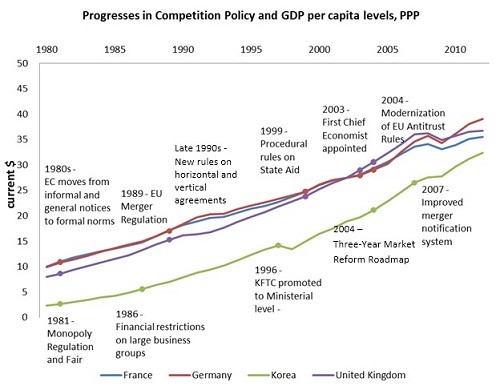Korea s Economy
Post on: 16 Март, 2015 No Comment

Prior to the economic crisis of 1997, Korea’s impressive growth performance was part of what has been described as the East Asian miracle. The three decades of extraordinary growth that transformed Korea from one of the poorest agrarian economies to the 11th largest economy and exporting country in the world, culminated in its accession to the Organization for Economic Cooperation and Development (OECD) on December 12, 1996. Korea’s rapid development was driven by very high rates of savings and investment and a strong emphasis on education, which boosted the number of young people enrolled in universities to among the highest levels in the world.
Korea’s path to development, however, was full of challenges and obstacles. After its independence from Japan in 1945, Korea’s economic development was a matter of national survival. With limited natural resources, insufficient domestic market, and virtually no tradition of economic development experience, Korea set out to insure its sovereignty through establishing a stable and independent economy.
However, the Korean War (1950-1953) merely prolonged the economic instability and stagnation. The number of civilian war casualties, including those missing, was approximately 1.5 million, and the nonmilitary war damage incurred to buildings, structures, equipment, facilities and other movable assets was estimated to be about US$3.1 billion at 1953 price.
The physical war damage incurred to the civilian economy was equivalent to about 85% of South Korea’s 1953 GNP. During the postwar reconstruction period (1953-1960), the rate of economic growth was quite low despite the massive inflow of foreign aid. Nonetheless, between 1953 and 1995, Korea’s GNP grew at an average annual rate of 7.6 %, thus resulting in about 21-fold increase in the level of GNP.
Since the population increased by 2.2 % annually during the same period, per capita GNP in real terms grew at the annual rate of 5.6 %, or increased about 9.3 times. From 1953 to 1996, Korea’s gross national product increased from US$2.3 billion to US$480.2 billion, with per capita GNP rising from US$67 to US$10,543, at current prices. Over those years of rapid development, Korea’s industrial structure has been drastically transformed. The economy that in the past largely depended on agriculture currently boasts a sizable manufacturing sector, which accounts for over 25.7% of Korea’s GDP in 1997. The commodity trade volume reached more than US$274.9 billion in 1996, in contrast to US$477 million in 1962. The gross savings ratio rose to 34.8 % from 11.0 % during the same period.
20copy.JPG /%














